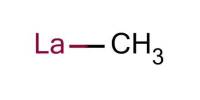Although breaking down carbon bonds is a notoriously challenging challenge, it might be the key to creating environmentally friendly, long-lasting compounds.
A silver-modified polyoxometalate photocatalyst was used by a Chinese research team to create the first visible light-promoted simultaneous breakage of carbon-carbon and carbon-nitrogen bonds, opening up possibilities for applications like carbon-neutral substitutes for fossil fuels. The researchers’ findings were published on March 3 in Polyoxometalates.
Photocatalytic technology, which is inexpensive and very effective, is being utilized to address the significant challenges of environmental pollution. In the science of photocatalysis, which uses light energy to drive chemical reactions, polyoxometalates (POMs) are a family of metal-oxide clusters having special physicochemical characteristics.
The capacity of POMs to act as photocatalysts to degrade organic pollutants in wastewater and lower carbon dioxide is due to the stability of their molecular structures and reversible redox characteristics. POMs can also catalyze simple organic transformations, including bond formation reactions of carbon-carbon (C-C) and carbon-nitrogen (C-N).
To the best of our knowledge, this is the first example of visible-light-promoted simultaneous cleavage of C-C bond and C-N bond catalyzed by a POM photocatalyst, which coincides with the social demand for green chemistry and sustainable development.
Shujun Li
However, most of the POMs can only work using ultraviolet light.
“It is of great significance to design and synthesize new visible-light-promoted POMs photocatalysts and explore their potential in new organic reactions,” said Shujun Li, study author from Henan Normal University.
With this goal, Li and colleagues explored synthesizing visible-light promoted POMs photocatalysts to wield in selective, simultaneous carbon bond cleaving.
“C-C and C-N bonds are the most widespread and fundamental bonds existing in organic compounds,” said Li. “Selectively catalytic cleavage of C–C bonds or C–N bonds for chemical transformations is an important topic in synthetic chemistry and has become one of the most attractive but challenging tasks.”
Chemists have been working toward this goal over the past few decades since breaking these tenacious connections might be essential to discovering useful new compounds or more environmentally friendly ways to produce existing ones.
As such, they have developed a variety of catalytic systems to cleave C–C bonds or C–N bonds separately. However, cleavage of both C–C and C–N bonds in a single organic transformation is a challenging objective.
“Few examples of simultaneous cleavage of C-C and C-N bonds in one substrate molecule have been reported so far,” said Li.
The simultaneous, quick breakage of these kinds of bonds necessitates harsh reaction conditions, such high temperatures and potent oxidizing or starting chemicals, which complicates matters further.
The research team combined niobium (Nb)/tungsten (W) mixed-addendum POM and silver (Ag) ion to obtain a silver-modified polyniobotungstate (Ag-Nb/W).
Ag-Nb/W showed strong absorption in the visible region, which encouraged the researchers to study its catalytic activity under visible light. The researchers’ investigations included analysis of substrate scope and bounds of conditions for best performance, as well as the stability and reusability of Ag-Nb/W.
The results indicated that the synthesis and structure of Ag-Nb/W supports efficient catalysis to simultaneously cleave C–C and C–N bonds under visible light in mild conditions. In addition, Ag-Nb/W could be reused up to six times without a reduction in the catalytic activity.
“To the best of our knowledge, this is the first example of visible-light-promoted simultaneous cleavage of C-C bond and C-N bond catalyzed by a POM photocatalyst, which coincides with the social demand for green chemistry and sustainable development,” said Li.
Inorganic processes involving the breaking of C-C and C-N bonds can be catalyzed by using new visible-light-induced polyoxometalates photocatalysts, according to Li.
The researchers want to use this molecule in combination with other solid carriers to create a distributed and more durable photocatalytic material that can be used in photocatalysis in the future.
















